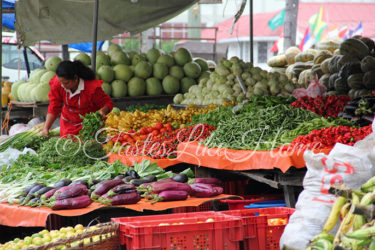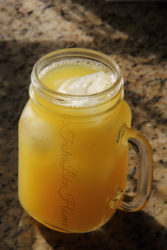Hi Everyone, As we say goodbye to 2016 it is normal to engage in reflection. As I look ahead to 2017, four columns signify things that I learnt in the past year and will continue thinking about and learning about in the future.
Changed hands
During my mom’s visit, I experienced firsthand how arthritis had robbed her of the ability to do many of the things she enjoyed doing in the kitchen. Kneading dough was almost impossible, stirring large pots of food a challenge. Tasks such as grasping a glass proved difficult and only glass jugs with handles would do. Ware plates proved heavy.
I experienced firsthand how arthritis had robbed her of the ability to do many of the things she enjoyed doing in the kitchen. Kneading dough was almost impossible, stirring large pots of food a challenge. Tasks such as grasping a glass proved difficult and only glass jugs with handles would do. Ware plates proved heavy.
Watching my mom has made me realize how life has seasons. We ascribe importance to things at certain periods of our lives but then circumstances change – physical and other – and gradually, or suddenly, those things no longer hold the importance or relevance they once did. Instead, things become practical. I never imagined my mother drinking anything other than tea or coffee from a cup but here she was drinking from a cup and glass jug because the handles provided the security and comfort needed to grasp the vessel.
The lightness of Melamine dinnerware has given my mother the independence and confidence of lifting her own plate to the dining table and back to the sink when she is done eating. Her China and other fine ware that she used regularly sit neatly, but unused, in the cabinet.
The lesson for me – use your things while you can, often, and every day if you like, for there may come a time when you can’t use them. And don’t wait for only special occasions or guests.
Shell, Peel, Communicate

These days we all seem to be in a hurry. But where is it that we are in a hurry to get to? Shell, Peel, Communicate asks the question – When was the last time that you had a real heart-to-heart conversation-the kind of communication that allows for long pauses, comfortable silence, eye contact, bent head, or the gentle nudging of the shoulders?
One of the main activities that connects us, quiets us long enough to stop arguing, to listen, to understand, to learn, and to really engage, is the 3-pronged act of cooking, sharing and eating. This activity provides nourishment not only to satisfy our physiological needs but also our need to feel that we are part of a family, a community. Yet, it is the thing we most take for granted. Grabbing food on the go is a norm rather than an exception; and even then eating is not an engagement with the food, the digital smart devices have to partake in the meal too. Cooking at home seems old fashioned and time consuming. We eat a lot but we are malnourished, and yet we do not want to slow down long enough to make something proper to nourish and fuel us for this fast race we are running.
Working hard is what life is for 99% of us. But we must take time to stop long enough to find out what is happening in the lives of the people we love and care for. We must stop long enough to prepare a meal, even if our only contribution is to help shell, peel, or cut. We must make the time to sit down long enough to linger at the table and participate in the communion.

An Apology and Commitment
Ask us about the foods of other countries and their cuisines and we can speak of them with ease and familiarity. However, ask us about some of our own local dishes and you’d see eyebrows knitted, frowns, and questioning eyes. I plead guilty, particularly when it comes to the foods of our Indigenous peoples.
September was Indigenous Heritage Month and most of the food posts on social media in celebration of the month comprised of Cassareep, Pepperpot, cassava bread, and Farine. A few people mentioned the drink Piwari. Angela Williams, a member of the Amerindian Heritage Association, helped educate many of us. I think that as Guyanese we should make it a high priority to know our food and I do not only mean the food of our Indigenous peoples. Kalounjie and fu-fu should be dishes we know off the top of our heads, and when someone says that they made rice pap, we should know that that is very similar to sweet rice. Let us commit to learning more about our food.
At Home in the Backyard Café
While we need to know more about our own foods, it is refreshing to find eating establishments in Guyana, especially the small-scale ones, such as The Backyard Café that exclusively make local foods, and are finding interesting and new ways to present familiar ingredients to us.
We must pay more than lip service to buying and eating local. We must seek out places that promote and celebrate what we have and offer support. There are artisans all over Guyana making and creating products of exceptional quality; seek them out. These days almost every household has a car, on the weekends take a long drive somewhere, take along a cooler with ice and go get your fresh cow or goat’s milk, pick up a couple bottles of honey, get your eggs directly from a farm, and for heaven’s sake, buy your fruits and vegetables fresh at the market rather than in a supermarket.
Happy New Year everybody!
Cynthia




